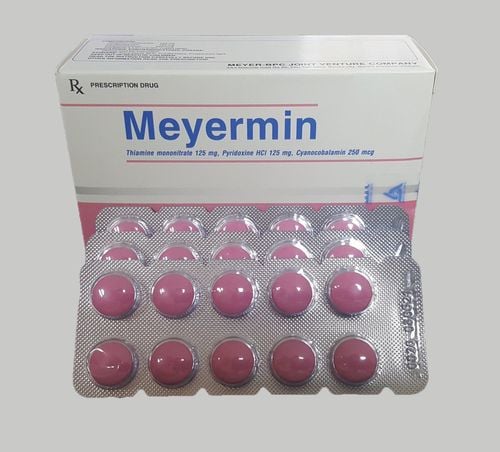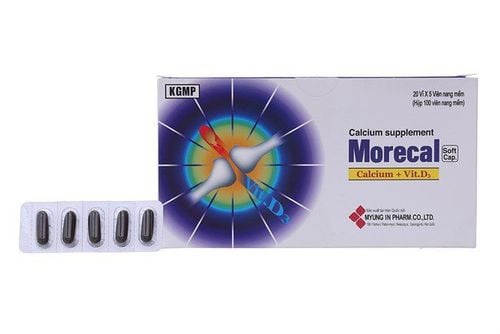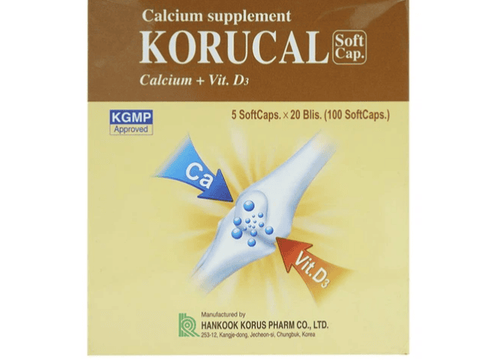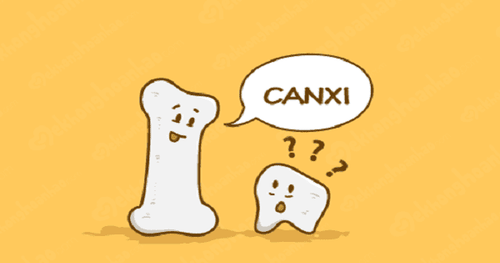This is an automatically translated article.
Rickets and malnutrition are two different diseases. But how are these conditions different? And what should parents do to ensure the good development of their children in each stage?1. What is the difference between rickets and malnutrition?
1.1 Rickets Caused by a deficiency of vitamin D, which affects the absorption and metabolism of calcium and phosphorus (which are essential for bone development). The disease is common in children under 3 years of age, mainly caused by lack of sunlight, excessive abstinence and a diet poor in calcium - phosphorus. Children who are not breastfed are more prone to rickets than breastfed children. .Manifestations of rickets include:
Children often cry, sleep restlessly, or startle, sweat a lot while sleeping. Appears hair loss on the back of the neck forming a scarf. Bone manifestations: Wide fontanelle, soft fontanelle, long-closed fontanel, with apical hump, forehead hump, flattened head of catfish. Severe cases of rickets with sequelae: string of ribs, chicken breast, anklets, wrists, X-shaped, O-shaped legs, Slow teeth, constipation. Slow motor development: slow to roll, crawl, walk, stand... In case of acute rickets: children may have convulsions due to hypocalcemia Children susceptible to rickets include:
Newborns young, giving birth to twins. Children fed cow's milk. Children are too chubby. Children born in winter 1.2 Malnutrition Caused by a diet lacking in vitamins/minerals and unscientific feeding, such as early weaning, starting to feed at the wrong time, or Poor quality food makes the baby susceptible to infections and chronic diseases, unable to grow up healthy.
Common signs are that children are overweight or lose weight, or are tired, anorexia, fussy and easy to get sick, children are also not active, teething slow, motor development slow. If severe malnutrition is also shown in 3 forms: edema, atrophy and mixed.
Children with underlying medical conditions that need long-term treatment Children with anorexia due to lack of vitamins/micronutrients (zinc, iron, calcium,...) Children with physiological anorexia at teething/ crawling/ walking stage Children are crammed, forced to eat leading to anorexia Children lack of nutrients (protein/sugar/flour/fiber/fat....) Based on the above signs, rickets and malnourished children can be seen. are very different and parents can distinguish themselves. However, it is important to note 2 points:
There are many plump children who eat and sleep well, are not malnourished but still suffer from rickets. The reason is because children have rickets when the body lacks vitamin D, leading to the inability to absorb and metabolize calcium and phosphorus not to meet the needs of bone development, causing damage to the bones. Rickets can be common in very chubby children because the need for calcium and phosphorus is greater than that of normal children (obstetric rickets). In contrast: There are many stunted and malnourished children but no rickets. the bone. The reason is that malnourished children have both weight and height measurements lower than normal children but may or may not have rickets. If the child's body is malnourished and still has enough calcium, the bone system will develop well, leading to the child not having rickets.

2. How to prevent/treat rickets and malnourished children?
Prevention and treatment of rickets:Give children daily sunbathing to support the body's metabolism and absorption of calcium and phosphorus. Give your child extra vitamin D as recommended by the doctor. For children with rickets, use calcium-containing products such as 1-2 tubes of calcium B1 - B2 - B6 per day. Older children can eat calcium nuggets 1-2 teaspoons/day (as recommended by doctors.) Dietary adjustments: breast-feeding children, supplementing with calcium-rich foods such as shrimp, crab, Fish, eggs, milk, animal liver, etc. In addition, parents should also add fat to their children's daily meals in an adequate amount because vitamin D is fat-soluble, so add oil to help children absorb vitamin D. Easier. Prevention and treatment of malnourished children:
It is necessary to adjust the diet and increase the food intake, find and eliminate the causes of malnutrition. Note: It is necessary to add enough nutrients, vitamins (especially B vitamins) and micronutrients (zinc, calcium, iron, phosphorus...) to increase absorption. In particular, zinc plays a very important role in the development of children in the first years of life and is especially necessary for malnourished children. Zinc is a component of more than 300 enzymes involved in the body's activities, helping to increase absorption, increase protein synthesis, increase appetite, strengthen the immune system, and help children grow taller. When zinc deficiency will make children anorexia, susceptible to infections. Parents need to monitor their children's monthly weight to promptly assess their malnutrition. Implement adequate vaccinations to prevent infectious diseases. For severely malnourished children, they need to be treated in hospital with methods such as rehydration - electrolytes, vitamin and mineral salt supplementation, protein infusion, anti-infection, treatment of anemia, anti-hypothermia and anti-hypoglycemia,... In summary, 2 conditions of malnutrition and rickets in children are common problems and leave great impacts on children's development. Therefore, when realizing that their children have signs of rickets and malnutrition, parents should take their children to medical facilities for examination and timely intervention.
Please dial HOTLINE for more information or register for an appointment HERE. Download MyVinmec app to make appointments faster and to manage your bookings easily.














